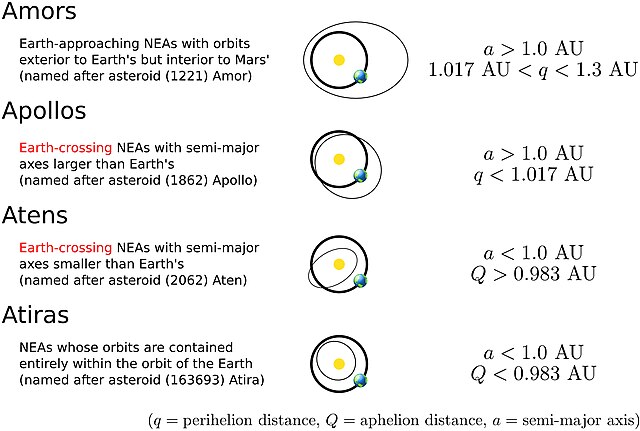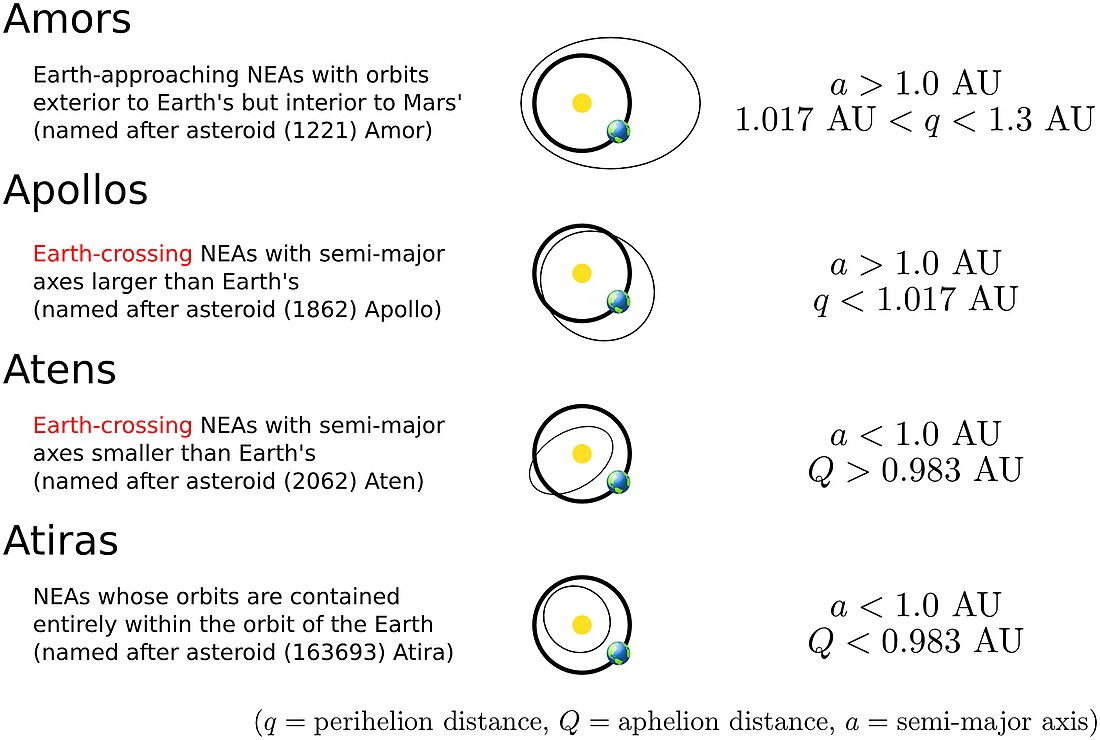Top Qs
Timeline
Chat
Perspective
Apollo asteroid
Group of near-Earth asteroids From Wikipedia, the free encyclopedia
Remove ads
The Apollo asteroids are a group of near-Earth asteroids named after 1862 Apollo, discovered by German astronomer Karl Reinmuth in the 1930s. They are Earth-crossing asteroids that have an orbital semi-major axis greater than that of the Earth (a > 1 AU) but perihelion distances less than the Earth's aphelion distance (q < 1.017 AU).[1][2]

As of January 2025[update], the number of known Apollo asteroids is 21,083, making the class the largest group of near-Earth objects (cf. the Aten, Amor and Atira asteroids), of which 1,742 are numbered (asteroids are not numbered until they have been observed at two or more oppositions), 81 are named, and 2,130 are identified as potentially hazardous asteroids.[3][4]
The closer their semi-major axis is to Earth's, the less eccentricity is needed for the orbits to cross. The Chelyabinsk meteor, that exploded over the city of Chelyabinsk in the southern Urals region of Russia on February 15, 2013, injuring an estimated 1,500 people with flying glass from broken windows, was an Apollo-class asteroid.[5][6]
Apollo asteroids are generally named after Greek deities.[7]
Remove ads
List
Summarize
Perspective
The largest known Apollo asteroid is 1866 Sisyphus, with a diameter of about 8.5 km. Examples of known Apollo asteroids include:
Remove ads
See also
References
External links
Wikiwand - on
Seamless Wikipedia browsing. On steroids.
Remove ads
